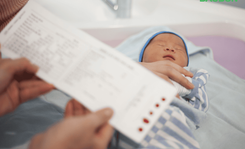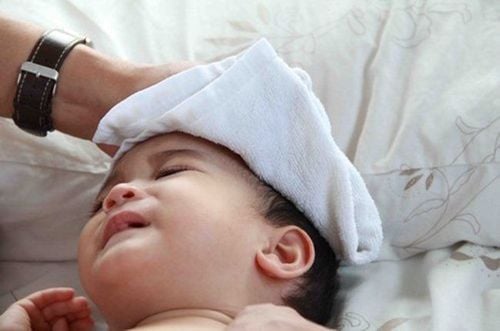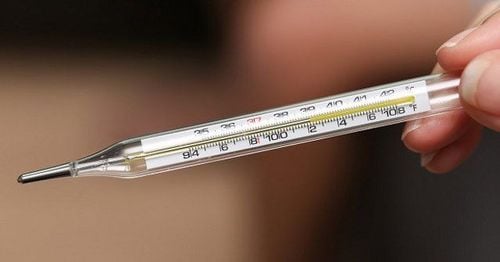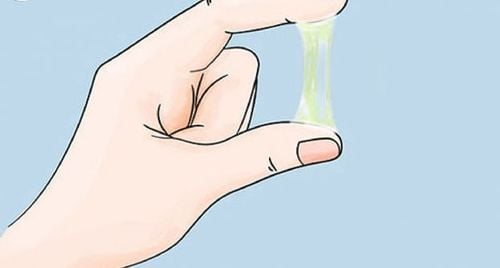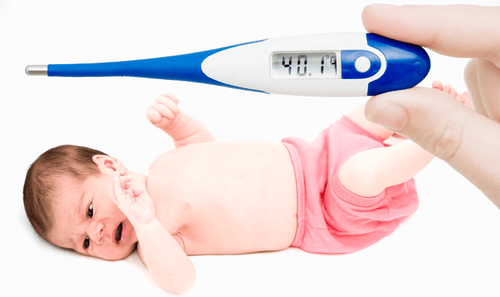This is an automatically translated article.
A healthy body maintains its temperature within a narrow range using body temperature balancing mechanisms.
The normal range for body temperature is 36°C - 37.5°C in clinical practice, temperature measurement is usually done at 3 locations:
In the rectum: under normal conditions operating in the range of 36.3 - 37.1°C. In the mouth: 0.2 - 0.6°C lower than in the rectum. In the armpit: 0.5 - 1°C lower than in the rectum, fluctuating much but convenient to monitor the patient's temperature. Although we can tell if a baby is hotter than usual by touching their forehead, only taking a baby's temperature can tell what an accurate body temperature is in a young child. Your child's temperature can be affected by the way the temperature is measured and other environmental factors.
Regardless of the type of thermometer used, the first and most important thing to do is to carefully read the instruction manual that came with the thermometer the first time you use it. Some guidelines for taking a child's temperature properly by different methods include:
Oral temperature measurement: Parents can use a digital multi-function thermometer to measure their baby's oral temperature. . Steps to measure oral temperature include:
Give the child a glass of warm water to drink, wait for 5 minutes and then take the measurement; Place the thermometer under the side of your baby's tongue; Instruct the child to hold the thermometer with their lips instead of their teeth and remind them to breathe through their nose; Wait until the thermometer beeps, indicating that the measurement is complete, then take out the thermometer and read the temperature value displayed on the digital display; The temperature in the baby's oral cavity is usually about 0.5oC lower than the body temperature, so this value should be added to the value obtained by the thermometer to accurately estimate the baby's body temperature; Parents can use a digital multi-function thermometer to measure their baby's oral temperature. ; Ask the child to close his or her arms to keep the thermometer in place in the armpit; Wait until the thermometer beeps, indicating that the measurement is complete, take the thermometer out and check the temperature value displayed on the digital display; Add 10C to the obtained temperature value for an accurate estimate of body temperature; Measuring a child's temperature in the armpit is a relatively easy method to perform, especially for young children. However, this measurement is also less accurate than measuring the temperature in the oral cavity. Ear temperature measurement: The child's ear temperature is measured with a specific thermometer, specifically for measuring ear temperature. Steps to take a child's temperature in the ear include:
Place a plastic tip on top of the thermometer; Gently insert the tip into the child's ear canal; Wait until the thermometer beeps, indicating that the measurement is complete, then take out the thermometer and read the temperature value displayed on the digital display; In the case of using the correct type of thermometer as well as the child's ear canal is not too small and does not have too much earwax, the ear thermometer has an error of about 10C. Forehead temperature measurement: The child's forehead temperature can be measured with a temporal artery thermometer. Make sure the child's forehead is completely dry before starting the measurement. Then gently sweep the thermometer across your baby's forehead. Check the temperature readings on the digital display and read the temperature readings.
When measuring the child's temperature, it is found that the child's body temperature is too high or the fever is accompanied by many unusual symptoms such as convulsions, rashes,... Parents should quickly take their children to the centers reputable medical center for timely examination and treatment.
Please dial HOTLINE for more information or register for an appointment HERE. Download MyVinmec app to make appointments faster and to manage your bookings easily.
